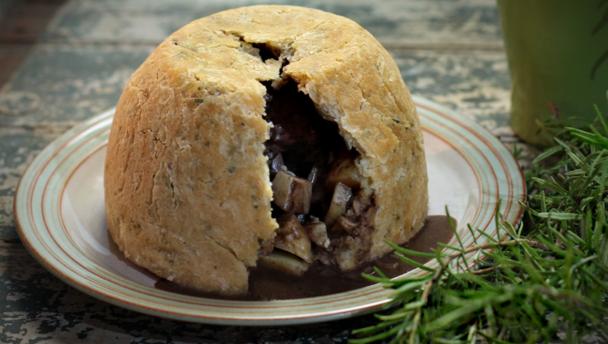

By Paul Hollywood
A speciality of England, this is cooking fat made from beef or mutton that is obtained from the area around the kidney and loins. Widely used until the mid-twentieth century, it is less popular now. It is prized for giving food a distinctive lightness, and a rich but unobtrusive flavour.
 Beef stew with dumplings
Beef stew with dumplings
 Beef stew with fluffy dumplings
Beef stew with fluffy dumplings
 Beef stew with dumplings
Beef stew with dumplings
 Beef and ale stew with dumplings
Beef and ale stew with dumplings
 Somerset chicken casserole with sage dumplings
Somerset chicken casserole with sage dumplings
 Classic Cornish pasty
Classic Cornish pasty
 Yorkshire puddings
Yorkshire puddings
 Jam roly-poly
Jam roly-poly
 Rich Christmas pudding
Rich Christmas pudding
 Sussex pond pudding with apples
Sussex pond pudding with apples
Rarely available in its natural form, suet is mixed with flour and sold in supermarkets in cream-coloured blocks. A vegetarian suet made from palm oil and rice flour is also available, but it gives slightly different results.
Keep refrigerated, and use within a few days of purchase.
Suet is used in traditional boiled, steamed or baked savoury and sweet puddings, such as steak and kidney pudding, spotted dick and jam roly-poly. It is also used to make soft-textured pastry, dumplings, haggis, mincemeat, Christmas pudding, and a rendered fat called tallow. Grate coarsely before use.
Article by Sejal Sukhadwala
Type the ingredients you want to use, then click Go. For better results you can use quotation marks around phrases (e.g. "chicken breast"). Alternatively you can search by chef, programme, cuisine, diet, or dish (e.g. Lasagne).